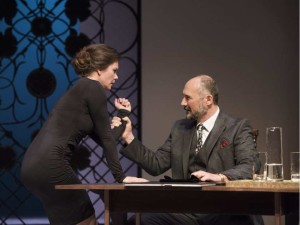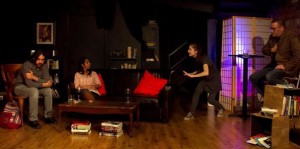The Last Wife: One for the memory book

The Last Wife
By Kate Hennig
A CGCT/Victoria Belfry co-production
Directed by Esther Jun
GCTC to Nov. 20
It’s rare to encounter as outstanding a fusion of creativity and on-stage talent as that now on display at GCTC. But this production of Kate Hennig’s mesmerizing play, The Last Wife, is definitely one for the memory books.
We’re in the turbulent world of Tudor England here — but again we’re not. This examination of the dying days of King Henry Vlll’s reign — and in particular the last of his marriages to the remarkable Catherine Parr — is set in modern dress. It’s an audacious move, but it brings into bolder relief issues that never really go away — issues having to do with the elusive dynamics of personal relationships as well the ravaged reality of power politics, both global and domestic …
